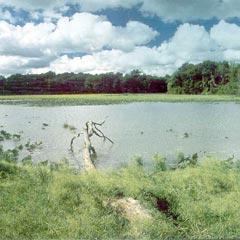Media
Galleries
Partnership with NSTA
![]()
Estuaries

Estuaries and their surrounding wetlands are bodies of water usually found where rivers meet the sea. Estuaries are home to unique plant and animal communities that have adapted to brackish — a mixture of fresh water draining from the land and salty seawater.
Estuaries are among of the most productive ecosystems in the world. Many animals rely on estuaries for food, places to breed, and migration stopovers. Human communities also rely on estuaries for food, recreation, jobs, and coastal protection.
Of the 32 largest cities in the world, 22 are located on estuaries (e.g., New Orleans, London, New York, etc). Human activities have led to the decline in the health of estuaries, making them one of the most threatened ecosystems on Earth. NOAA's National Estuarine Research Reserve System, in partnership with coastal states, monitors the health of estuaries and helps communities manage their coastal resources.
Classroom Resource
These resources focus on the different types of estuaries, the kinds of organisms found in estuaries, and how they have adapted to survive in these unique environments. These materials also highlight the important work being done to monitor, protect and restore estuaries. Lesson plans are provided, along with case studies from teachers describing how the lessons were implemented in their classrooms.







